Cedarhurst Alvar
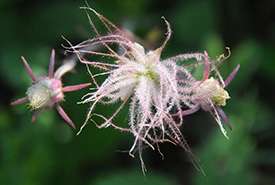
Prairie smoke, Cedarhurst, Carden Alvar, ON (Photo by William McIntyre)
Help protect the heart of the Carden Alvar
Located northeast of Lake Simcoe, the Carden Alvar supports some of the highest quality and most extensive alvar habitat on the planet within a larger mosaic of grassland, wetland and forest. Lying at the crossroads of northern and southern Ontario, Carden Alvar is home to a variety of species, including some more common on the Canadian Shield, such as moose and black bear. The area has also been designated an Important Bird and Biodiversity Area, an Area of Natural and Scientific Interest and contains globally rare alvar habitat and species
Alvars are naturally open habitats with either a thin covering of soil, or no soil, over a base of limestone or dolostone bedrock. Their unique geological and physical characteristics set the stage for natural communities that simply cannot exist elsewhere. Alvars are rare. They are found in only a handful of locations across the globe, including the eastern European Baltic region, United Kingdom and Ireland. In North America, almost 75 per cent of alvars are in Ontario.
Carden Alvar is recognized worldwide as a destination for birdwatching due to the large number and diversity of grassland birds, including grasshopper sparrow, bobolink, upland sandpiper, field sparrow, eastern meadowlark and loggerhead shrike.
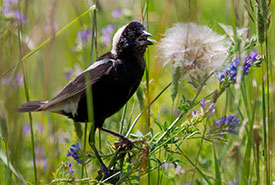
Bobolink, Prairie Smoke Nature Reserve, Carden Alvar, ON (Photo by NCC)
The Nature Conservancy of Canada (NCC) has the opportunity to purchase a 551-hectare (1,362-acre) property at the heart of the Carden Alvar Natural Area. This large property links up with existing conservation lands and, once it is conserved, will be part of a protected corridor between Carden Alvar Provincial Park to the south and NCC and partner-conserved lands extending north to Queen Elizabeth II Wildlands Provincial Park.
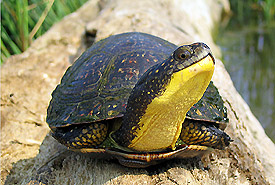
Blanding's turtle, Frontenac Arch Natural Area, Ontario (Photo by Ryan M. Bolton)
This property is truly the heart of the alvar. Protecting this piece of the puzzle, which was recently a proposed site for a shooting range, is essential to the long-term successful conservation of Carden Alvar. The property is a known breeding location for rare birds like eastern meadowlark, whip-poor-will, eastern wood-pewee, common nighthawk, golden-winged warbler and wood thrush. The endangered loggerhead shrike, Blanding’s turtle and snapping turtle are also expected to make use of the high-quality grassland and wetland habitats on the property.
We need your help!
Together with our local conservation partner, the Couchiching Conservancy, NCC must raise $1,000,000 by spring 2021 to ensure this important globally rare habitat remains protected and intact for the long term. We are looking for committed supporters to pledge funds over three years to help purchase the property and to fund vital, on-going stewardship work needed to manage these lands for the long term.
Donate today!
Quick facts
Location: Carden, 35 kilometres northeast of Orillia, Ontario
Habitat type: Alvar, wetland, forest, grassland
Size: 551 hectares (1,362 acres)
Project cost: $1,000,000
Species: Eastern meadowlark, whip-poor-will, common nighthawk, golden-winged warbler, wood thrush, eastern wood-pewee, loggerhead shrike, Blanding's turtle, snapping turtle, black bear and moose
Carden Alvar: A priority for conservation
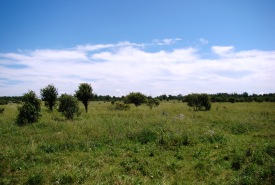
Carden Alvar, ON (Photo by NCC)
Carden Alvar is one of the largest and most significant collections of alvars in the world. The 17,230-hectare (42,576-acre) Carden Alvar Natural Area contains a mixture of alvars, forests, wetlands and grasslands. However, habitat loss, fragmentation and development have all put it at risk. Its proximity to the Greater Toronto Area and cottage country makes it an ideal location for recreation, and its limestone is attractive for gravel extraction operations. Due to its importance and the threats it faces, the Carden Alvar Natural Area has been the focus of NCC’s conservation efforts since 1998. NCC and our partners, including our primary local partner the Couchiching Conservancy, have helped protect over 3,642 hectares (9,000 acres) of this internationally important area.
The Carden Alvar area has a strong agricultural tradition. Its open grasslands have been instrumental in its long history as a local beef cattle ranching hub. NCC is supportive of local historic agricultural uses and is committed to working with the community to find a balance between competing land interests. This will ensure that this unique ecosystem can thrive into the future while the local community and various interest groups can prosper as well.
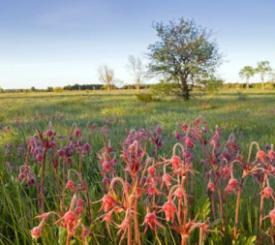
Prairie smoke, Carden Alvar, Ontario (Photo by Ethan Meleg)
Like so many other natural areas across Ontario, invasive species continue to be a primary threat in Carden Alvar. Each year, NCC staff, along with our partners and volunteers spend hundreds of hours removing invasive species, such as dog-strangling vine, buckthorn, phragmites, Tatarian and Morrow’s honeysuckle and common frogbit from the alvars, wetlands and forests here. NCC is committed to managing and controlling invasive species across the alvar, and encouraging safe and sustainable visitor management to ensure locals and visitors alike can enjoy the unique beauty of Carden Alvar.
A natural legacy
When it comes to conserving Canada’s most important natural areas, buying land is just the beginning. Stewardship — managing the land for the long term — is at the heart of what we do. Each and every property we protect is monitored and managed, so that the ecosystems are maintained and species thrive, even if that means leaving it be. This can include mapping and removing invasive species, restoring wetlands, grasslands and forests, monitoring for species at risk, planting native species, building trails or installing signage.
To continue to care for the natural areas we protect, NCC has created a Stewardship Endowment Fund. This fund provides annual support for our priority stewardship work across Ontario. Annual benefits from the endowment fund are used to pay the costs necessary to ensure efficient and long-term, science-based management of lands under NCC’s care.
NCC may direct all or a portion of gifts committed to this project to NCC’s Stewardship Endowment Fund for Ontario. Revenue generated by the Stewardship Endowment Fund provides for long-term management on properties across the province, including NCC conservation lands on the Cedarhurst Alvar property. In the event that this project becomes fully funded or cannot be carried out, your gift will be allocated to the next urgent priority in this natural area.




